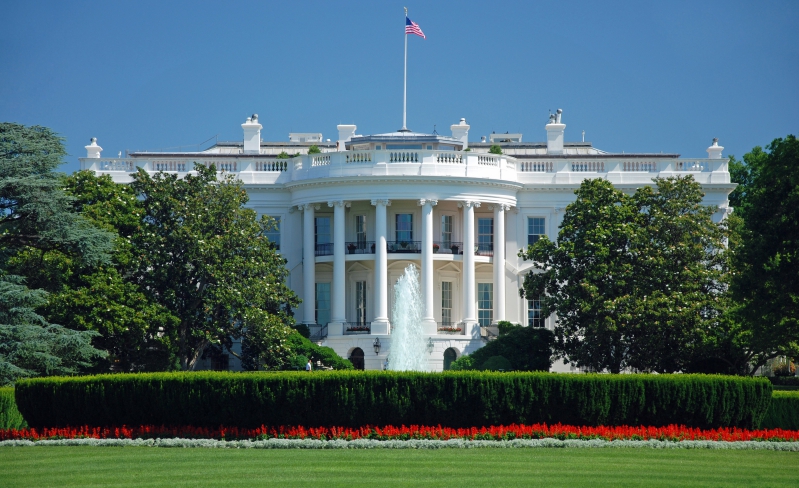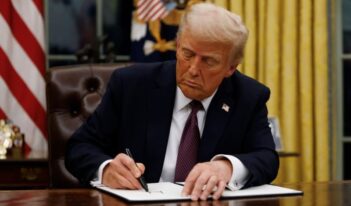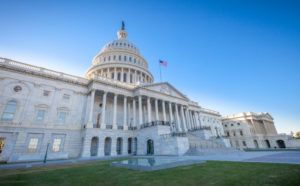
Scholars argue that rollback tools mean Presidents must act fast to implement lasting policy.
U.S. Presidents serve four-year terms. But increasingly it appears that Presidents only have two years to make policy if they want it to last.
This is the thesis of a forthcoming article by two legal experts who argue that President Donald J. Trump made aggressive use of a set of policy-reversing tools during his term and that President Joseph R. Biden has followed suit.
The article’s authors—Bethany A. Davis Noll, the executive director of the State Energy & Environmental Impact Center at the NYU School of Law, and Richard L. Revesz, AnBryce Professor of Law and Dean Emeritus at the NYU School of Law—contend that Presidents can combine these tools to roll back recent policy, making any regulations issued in the last two years of the previous presidency vulnerable to repeal.
As a result, administrations increasingly face pressure to enact regulations early, and Americans are in for “rollback whiplash”—that is, the repeated, back-and forth use of these regulatory reversals—in presidential transitions to come, according to Noll and Revesz.
They argue that three main tools jeopardize the legacy of regulations enacted during the final two years of a presidential administration.
The first is the Congressional Review Act (CRA), which allows a newly seated legislature to review and effectively repeal any rules made during a “lookback period” that extends about six months into the previous administration.
The second tool is known as a judicial abeyance, which refers to a court order that a President can request so that litigation over a particular regulation can be paused. When litigation relates to a regulation enacted by the previous administration, an abeyance can allow the new administration to change the rule before the court evaluates it, which allows the administration to avoid the possibility of a favorable opinion on a regulation it opposes. The use of abeyances can allow a President to reach back to their predecessor’s final two years, since litigation over regulations can last that long.
The final tool is a suspension. Presidents can issue suspensions to prevent the implementation of a prior administration’s rules for a period of time. Because regulations can take years to go into effect even after they are made final, the expanded use of suspensions could threaten years of yet-to-be-implemented policy.
According to Noll and Revesz, President Trump broke with tradition by frequently using these tools to reverse regulations enacted by President Barack Obama. Before President Trump, Congress had used the CRA only once since its passage in 1996. But together with a Republican-controlled Congress, President Trump repealed 14 of President Obama’s regulations using the Act.
Although abeyances have been used frequently by prior administrations, Noll and Revesz note that President Trump departed from norms by requesting abeyances in later stages of litigation, after courts had made significant progress in evaluating a regulation. In one case, he successfully requested an abeyance after oral argument—typically the final stage before decision on a case.
Noll and Revesz also argue that President Trump pushed the envelope by suspending regulations that had already gone into effect. In many cases, courts struck down his actions as illegal.
As President Biden’s inauguration approached, and President Trump introduced a series of last-minute “midnight regulations,” commentators’ expectations of President Biden varied. While some observers began to identify rules that President Biden could repeal, others doubted that he would use the CRA, which Democrats have largely avoided because of its perception as anti-regulatory.
Noll and Revesz argue, however, that President Biden has used the same set of tools, perhaps even as aggressively.
Under the Biden Administration, Congress successfully repealed three regulations under the CRA—an unprecedented move for a Democratic Administration.
Noll and Revesz argue that President Biden also followed President Trump in requesting late-stage abeyances. His Administration has successfully requested abeyances in six instances in which oral argument had already occurred.
President Biden has also used suspensions to reverse Trump-era policy, but Noll and Revesz argue that he has diverged from his predecessor’s pattern somewhat. They explain that, although some of President Biden’s suspensions have skirted requirements such as public comment periods, the majority complied with the relevant laws, and courts have challenged very few of them.
In the short term, President Biden’s actions have resulted in the reversal of several Trump-era policies, including the deregulation of methane emissions in the fossil fuel industry.
Noll and Revesz predict that, over the longer term, the use of the presidential regulatory rollback toolkit will continue. As a result, each new President must act more quickly if they hope to leave behind a lasting legacy.
Aside from rollbacks, President Biden’s affirmative policy actions during his term thus far demonstrate the pressure to act quickly, according to Noll and Revesz. On Inauguration Day, President Biden issued an executive order that gave agency heads tight deadlines to review all regulations issued under President Trump and to identify those that should be reversed. Noll and Revesz note that this order was unique because it set out explicit, relatively tight timelines for reversing specific regulations. Agencies have largely complied with these deadlines and commenced efforts to reverse policy through new rules.
According to Noll and Revesz, this pressure means that presidential administrations and agencies will have to make strategic decisions that may have adverse consequences. For example, an agency might choose an earlier compliance deadline for a regulation. But allowing less time for compliance could make the regulation more vulnerable to legal challenges on the grounds that the deadline is unreasonably difficult to meet.
To some commentators, the policy reversal phenomenon is nothing new. In response to an earlier Noll and Revesz essay about President Trump’s use of these tools, William Yeatman of the Cato Institute has argued that Noll and Revesz exaggerate the novelty of the rollback toolkit. Yeatman further asserted that regulatory reform is not usually a task Presidents undertake in their first term and that President Trump’s robust early regulatory action was unique.
Noll and Revesz disagree with Yeatman, arguing that some existing tools, such as the CRA, had rarely been successfully used before the Trump Administration. Others, they contend, have been employed in a newly aggressive way, and together, they present a new threat to presidential legacies.
They offer a solution that might alleviate the pressure on Presidents to make law through regulations and, consequently, the pressure to issue regulations quickly: End the filibuster. They argue that the difficulty Congress faces in passing laws as a result of the filibuster’s ability to stall legislation in the U.S. Senate causes administrations to rely more heavily on regulation to set policy. Despite more frequent calls to eliminate the filibuster since President Biden took office, Noll and Revesz doubt that the Senate will follow through anytime soon.
In the meantime, the rollback whiplash will continue, Noll and Revesz contend. If they are right, it will be more difficult for any future one-term Presidents to make lasting policy past their first two years in office.



